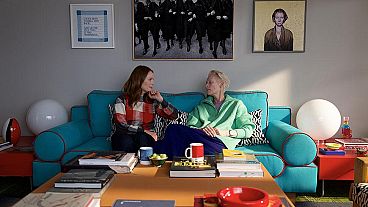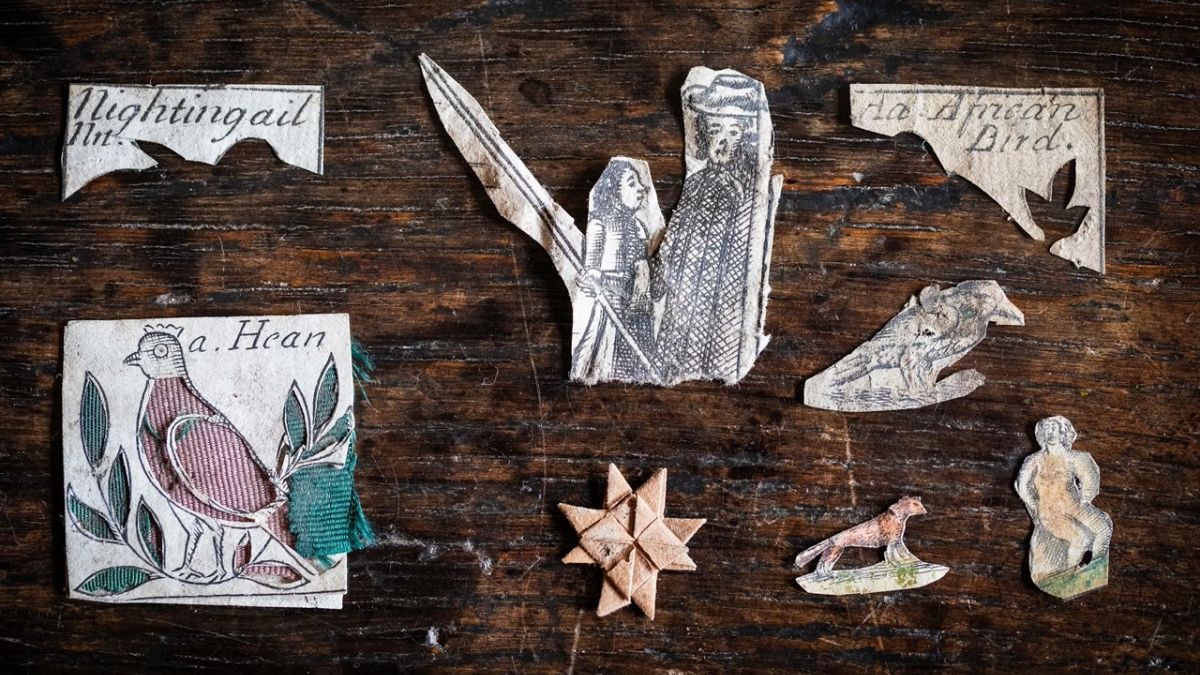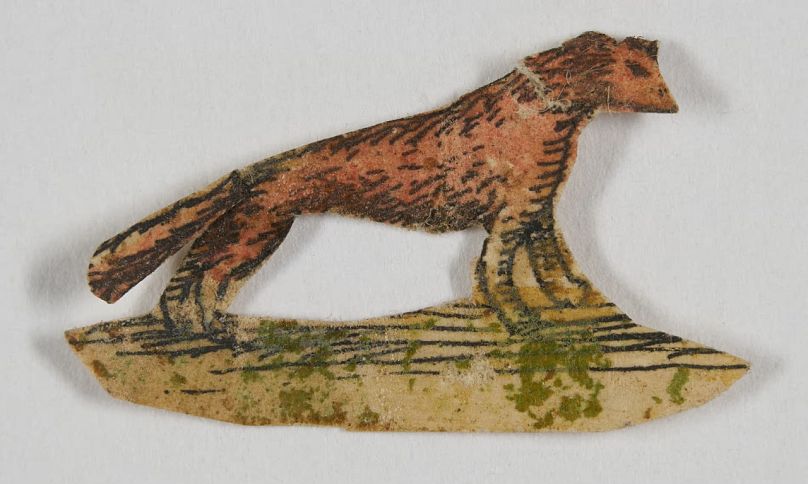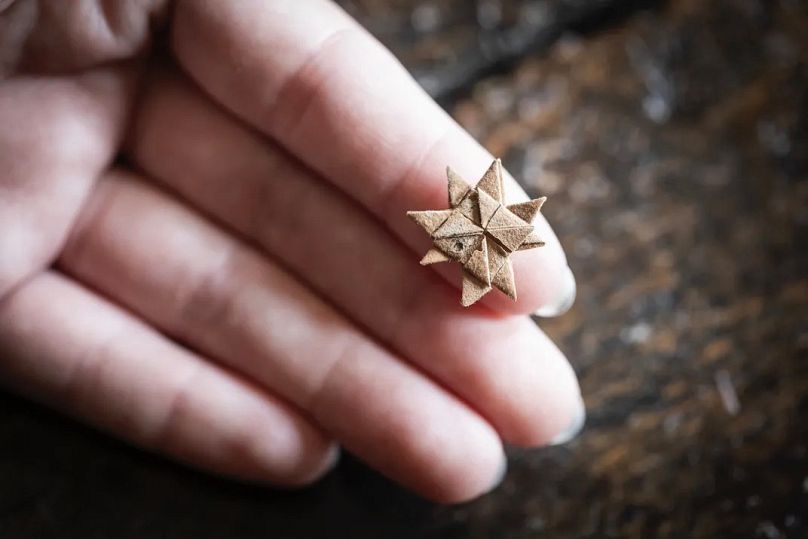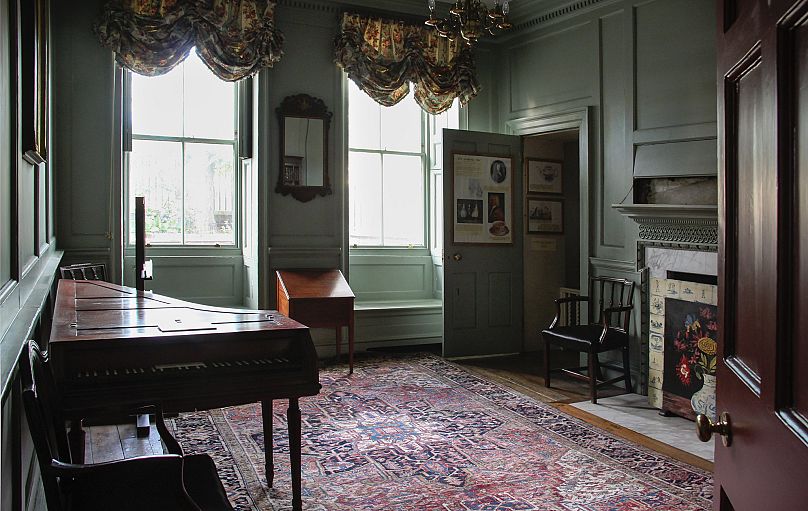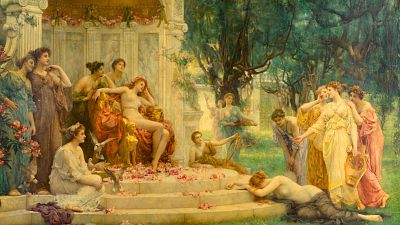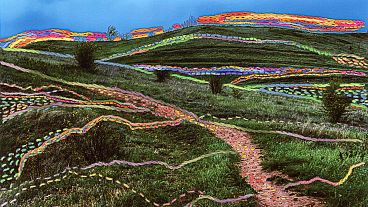The intricate designs – very rare examples of the paper-cutting art form – were found beneath the floorboards of a former London boarding school, and will be on show until December.
The East London neighbourhood of Hackney may be known as a contemporary hub for the arts, but its creative credentials go way back. The latest string to be added to the area’s artistic bow is a set of 17th-century decorative paper-cuttings.
The rare examples of the art form were first discovered in the 1980s beneath the floorboards of Sutton House, a historic building that once functioned as a school for upper- and middle-class girls, winning it the moniker of “the ladies’ university”.
It was only last year, however, that volunteers sorted through and catalogued the tiny, delicate objects, cut from books, and whose designs include people, a hen, star and fox.
Eight examples of the art form have been identified, which are now on show at Sutton House.
These intricate objects are believed to have been made by students, who would have learned paper cutting alongside other crafts, such as needlework and embroidery.
Given the fragile nature of the materials, it’s quite extraordinary that the designs were found intact, experts say.
“It’s an art form that is discussed in 17th-century domestic manuals, but there is very little material survival – three examples from 17th-century England, of which this is one,” Isabella Rosner, an expert in modern material culture, told The Guardian.
“They were learning to create something beautiful, and it required patience, dexterity and artistry,” she explained.
Also speaking to The Guardian, Kate Simpson, a senior collections and house officer at the National Trust, which owns the property, remarked on the significance of Sutton House.
“It was a relatively new concept to have girls educated. They came from middle- and upper-class families,” she said of the school, which opened in 1657.
The ornate cuttings will be on show at Sutton House until December.
“The colours are so vivid because they have been hidden from light for so long. We want to make sure that we don’t expose them to light for too long,” Simpson said.




